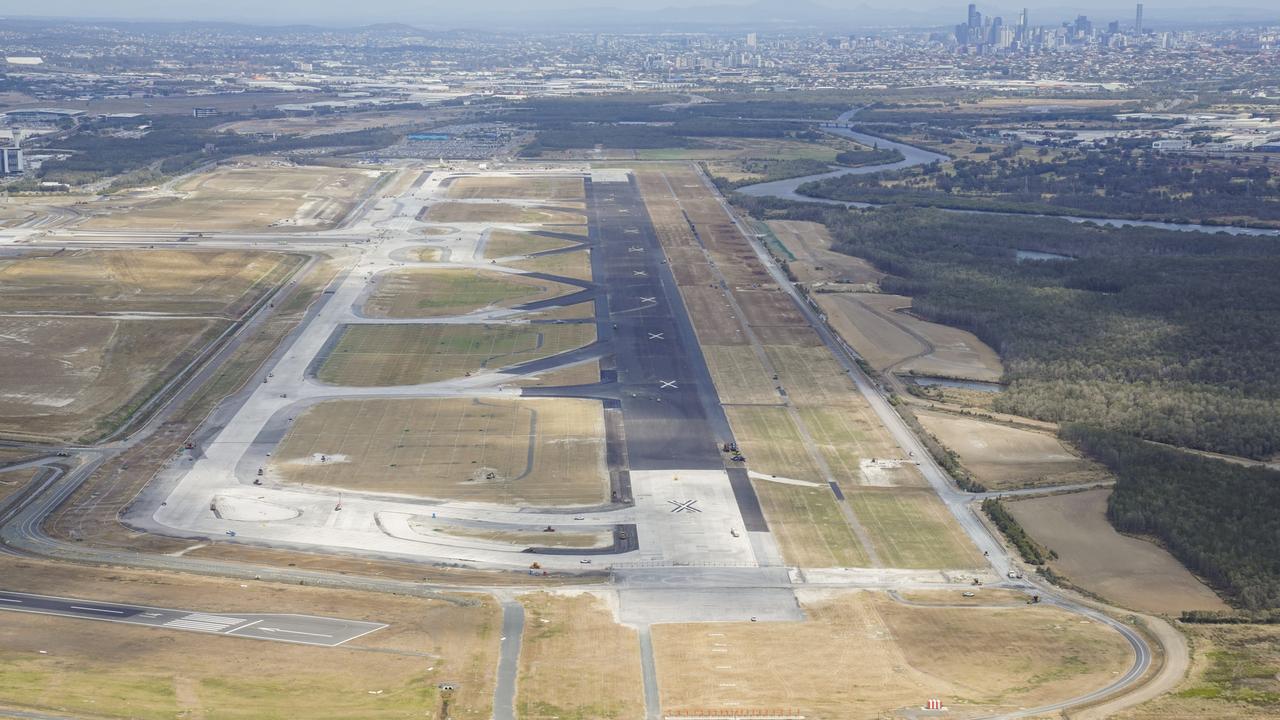Bernard Salt: Is it time to re-name southeast Queensland?
IS it time to think of a new term to describe the surging, beating, 21st-century heart of your state that now goes by the geography-book descriptor of southeast Queensland, asks BERNARD SALT.

COME with me, Queenslanders, on a journey through time and space to the place we now know as southeast Queensland, but which in the future might be known as something else entirely.
The Gold Coast and the Sunshine Coast are new names for new cities that burgeoned with new concepts like lifestyle and retirement and intercity commuting in the second-half of the 20th century.
Perhaps it is time, Queenslanders, to think of a new term to describe the surging, beating, 21st-century heart of your state that now goes by the geography-book descriptor of southeast Queensland.
$70B PLAN TO CUT COMMUTE TIMES
I had thought something along the lifestyle line similar to the Gold Coast and the Sunshine Coast, or maybe something that suggests a system of cities that work together like a clock’s cogs.
SHOULD THE SOUTHEAST GET A NAME CHANGE? SCROLL DOWN AND HAVE YOUR SAY IN THE COMMENTS SECTION BELOW
After all, there is no other place in Australia quite like the system of cities that comprise SEQ.
My thinking on this issue isn’t so much to create a market-friendly term for southeast Queensland (although that is a by-product), it is to galvanise the community and the political leadership of this region into a focused force.
WHAT SOUTHEAST QUEENSLAND WILL LOOK LIKE IN 2043

Southeast Queensland is an amalgam of powerful tribes – a series of independent, and independently-minded, communities – cohabiting broadly the same space.
Sometimes there is a greater good to be achieved for the collective by subjugating individual desires.
IS IT TIME TO RENAME SOUTHEAST QUEENSLAND?
Maybe building bigger motorways and more railways connecting all the bits and pieces of a disparate southeast Queensland, isn’t the way to go. Maybe the best way to organise the five million or so residents of what we now call SEQ in 2043 is to create a series of decentralised mini-me CBDs in the southern and northern suburbs of Brisbane, on the Gold Coast, on the Sunshine Coast and in Toowoomba.
A single unified community – maybe as a kind of “SEQ rebranded” – would be more inclined to see a bigger and a better vision for the region.
Local political leaders wouldn’t be measured so much on what goodies they managed to snaffle from state and federal budgets for their patch, but rather on how they contributed to making the broader region a better place to live, work and play.
Make no mistake, the region we now know as southeast Queensland is Australia’s rising third global force closely following a trajectory of Sydney and Melbourne, but doing it differently and, some would say, better.
By 2043, SEQ will be the size of Sydney and Melbourne today, but spread across a wider and more democratic canvas, meaning where power centres are multiplied and dispersed as opposed to chauvinistically centralised in a single “glorious” CBD.
Make no mistake, central Brisbane cultivates hipster enclaves that are every bit as fashionable and as smashed-avocadoesque as Sydney’s Surry Hills and Melbourne’s North Fitzroy.
But whereas the outermost reaches of these southern behemoths offer pleasant but sedentary coastal living, SEQ’s “coasts” are vibrant hubs pulsing with energy, students, visitors and global connectivity: they’re the electrifying edges of the SEQ urban system.
SEQ’s a bit like, we see you Sydney and Melbourne, and we reckon we can create something better, much better. But in order to create that something better, the tribes – the collection of cogs that make SEQ tick – must work together for the greater good.
And this brings me to the next point in how SEQ might look, feel and operate in 2043. At some point over the next 25 years, the Olympics will return to Australia following Melbourne in 1956 and Sydney in 2000.
It’ll be “our turn” again at some point from about 2032 onwards. Amid the jockeying and the jostling between states and cities for the right to represent the Australian nation in the bid process, are the people of Queensland happy to have the games return to Sydney or Melbourne?
And if so, would this not represent an abrogation of SEQ’s sovereign right as the nation’s third-biggest city to host Australia’s third games?
This is an important hurdle in the development of SEQ, and not just in terms of leveraging Commonwealth resources into the region – although that is a benefit – but in terms of having the alpha-state determination to claim, to exercise and to deliver all that is rightfully Queensland’s.
This is an issue that can be politely avoided for some years yet, but at some point maybe two administrations into the future if not earlier, Queenslanders will ask why the proud nation of the SEQ lands are not representing Australia in a dead-set pitch to compete globally and forthrightly for the right to host the 2036 Olympics.
Do not let an opportunity to host the next Australian Olympics go to waste.
This can be the cause, the unifying force, an alpha-state aspiration, that ties the disparate bits of SEQ together, and that projects the region, its name and the nation to the rest of the world.
Bernard Salt is managing director of The Demographics Group, bernard@tdgp.com.au



